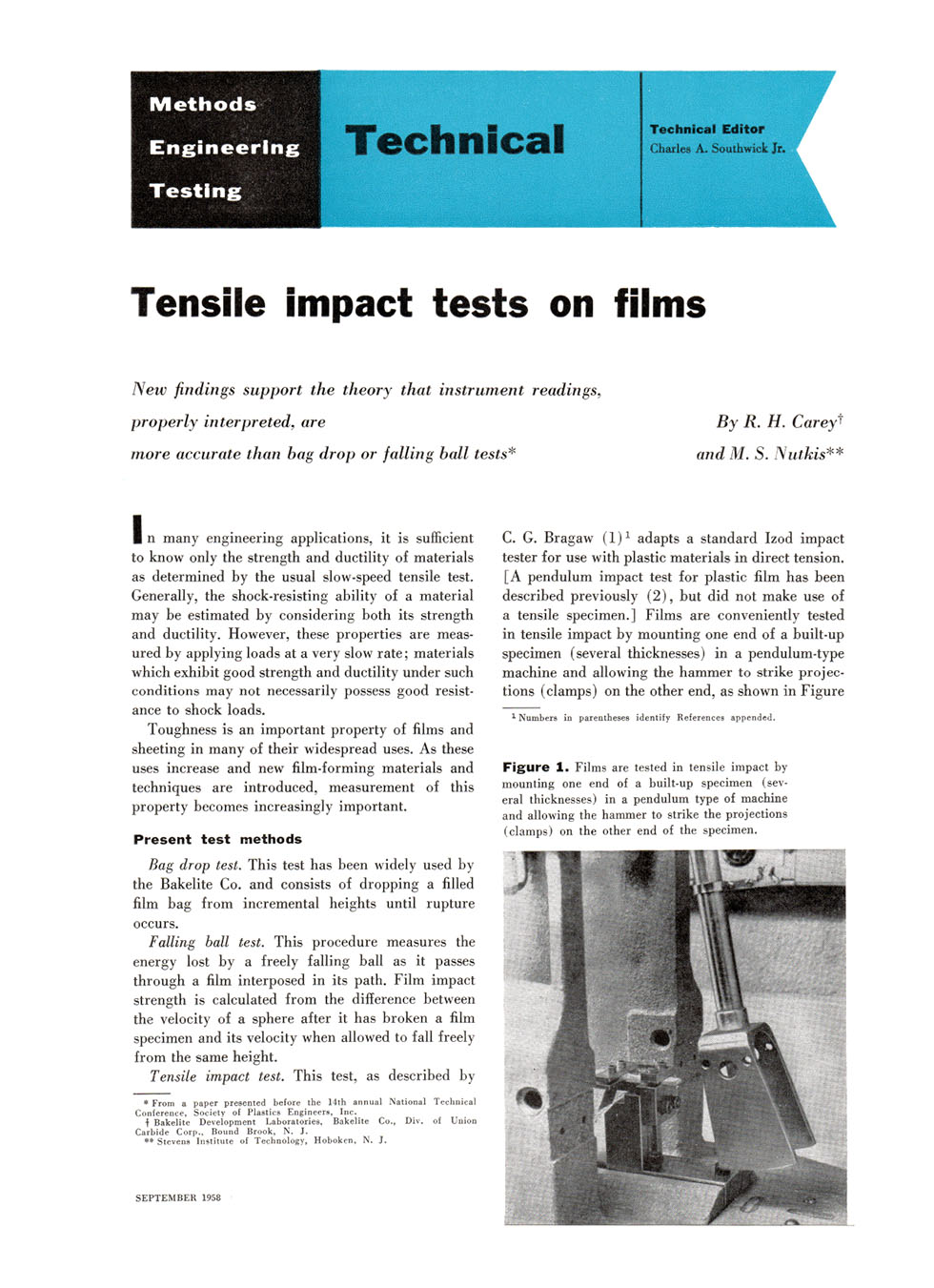


Methods
Engineering
Testing
⅜aii⅞¾^fcsiliiii
Technical Edi⅞er
Charles A. Southwick Jr.
Tensile impact tests on films
New findings support the theory that instrument readings9
properly interpreted9 are By R. H. Careyt
more accurate than bag drop or falling ball tests* and M. S. Nutkis**
I n many engineering applications, it is sufficient to know only the strength and ductility of materials as determined by the usual slow-speed tensile test. Generally, the shock-resisting ability of a material may be estimated by considering both its strength and ductility. However, these properties are measured by applying loads at a very slow rate; materials which exhibit good strength and ductility under such conditions may not necessarily possess good resistance to shock loads.
Toughness is an important property of films and sheeting in many of their widespread uses. As these uses increase and new film-forming materials and techniques are introduced, measurement of this property becomes increasingly important.
Present test methods
Bag drop test. This test has been widely used by the Bakelite Co. and consists of dropping a filled film bag from incremental heights until rupture occurs.
Falling ball test. This procedure measures the energy lost by a freely falling ball as it passes through a film interposed in its path. Film impact strength is calculated from the difference between the velocity of a sphere after it has broken a film specimen and its velocity when allowed to fall freely from the same height.
Tensile impact test. This test, as described by
* From a paper presented before the 14th annual National Technical Conference, Society of Plastics Engineers, Inc.
•f Bakelite Development Laboratories, Bakelite Co., Div. of Union Carbide Corp., Bound Brook, N. J.
⅜⅜ Stevens Institute of Technology, Hoboken, N. J.
C. G. Bragaw (l)1 adapts a standard Izod impact tester for use with plastic materials in direct tension. [A pendulum impact test for plastic film has been described previously (2), but did not make use of a tensile specimen.] Films are conveniently tested in tensile impact by mounting one end of a built-up specimen (several thicknesses) in a pendulum-type machine and allowing the hammer to strike projections (clamps) on the other end, as shown in Figure
1 Numbers in parentheses identify References appended.
Figure 1. Films are tested in tensile impact by mounting one end of a built-up specimen (several thicknesses) in a pendulum type of machine and allowing the hammer to strike the projections (clamps) on the other end of the specimen.
SEPTEMBER 1958